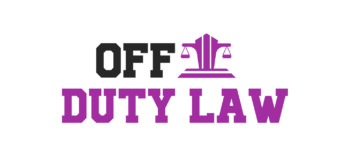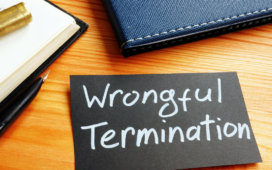New York City builds upward. With that comes scaffolding on nearly every block, and a steady stream of risks for the men and women working on those frames. When scaffolds fail or safety rules slip, injuries are often catastrophic. This guide breaks down how scaffold accidents happen, what protections New York law provides, and how injured workers can pursue justice. Drawing on the experience of NYC Scaffold Accident Lawyers, it explains the rights available under New York’s unique Labor Law, the compensation victims can recover, and how strong legal strategy in 2025 can change the outcome. Readers can explore related resources on Our website.
Rising scaffold accident cases in New York construction sites
New York’s construction pace has rebounded, and with more active sites comes increased exposure to scaffolding hazards. While exact numbers fluctuate, safety agencies consistently flag falls and struck-by incidents as leading causes of serious injuries. In a dense city, even a small safety miss, an unsecured plank, a missing guardrail, can have outsized consequences.
Common contributors show up again and again:
- Inadequate fall protection, including missing guardrails or improperly used harnesses
- Faulty assembly or anchorage, especially on multi-tier supported scaffolds
- Overloaded platforms and uneven loads on planking
- Weather, high winds, ice, or rain turning platforms slick and unstable
- Insufficient training or a lack of a competent person inspecting the scaffold daily
- Struck-by hazards from falling tools, materials, or debris due to missing toeboards or netting
Different scaffold types carry different risks. Suspended (swing-stage) scaffolds depend on properly rigged lifelines and hoists: a failure at height can be catastrophic. Supported scaffolds require correct base plates, mudsills, proper ties to the structure, and consistent vertical alignment. Sidewalk sheds protect the public below but can create blind spots for workers and cluttered access paths, a setup for trips and falls if housekeeping lags.
NYC regulators have intensified inspections and targeted enforcement, but relentless schedules, subcontracting layers, and language barriers still let hazards slip through. The legal framework exists to keep workers safe: the challenge is consistent compliance on busy, complex sites.
Worker protections under NYC scaffold safety regulations
Scaffold work in New York City is governed by overlapping safety rules designed to prevent the very incidents that make headlines.
Key pillars include:
- OSHA Subpart L (29 CFR 1926.450–.454): Federal rules on design, capacity, guardrails, fall arrest systems, access, and daily inspections by a competent person.
- NYC Building Code Chapter 33 (Safeguards During Construction or Demolition), including §3314 (Scaffolds): Local requirements for permits, erection, use, inspections, and removal, with additional specifications tailored to the city’s dense environment.
- Local Law 196 (Site Safety Training): Most workers on major NYC projects must complete at least 40 hours of Site Safety Training, and supervisors typically 62 hours, covering fall protection, scaffold safety, and more.
In plain terms, these protections mean:
- Scaffolds must be erected and altered under the supervision of qualified personnel using components that meet rated capacities.
- Platforms need proper planking and full guardrail systems: toeboards and debris netting help prevent falling-object injuries.
- Fall protection isn’t optional, lifelines, anchors, and harnesses must be provided and usable, with compatible connectors and adequate clearance.
- A competent person must inspect the scaffold before each shift and after any event (like high winds) that could affect integrity.
- Loads must stay within the scaffold’s design capacity, and materials should be stored to maintain even distribution and safe access.
- Access points (ladders, stair towers) must be safe, unobstructed, and properly secured.
When these rules are followed, scaffold accidents are far less likely. When they’re ignored, New York’s liability standards step in to protect injured workers.
Legal rights of victims injured in scaffold collapses
New York’s Labor Law provides some of the strongest protections for injured construction workers in the country, especially through Labor Law §240(1), often called the Scaffold Law.
What §240(1) does:
- Imposes absolute liability on property owners and general contractors for elevation-related hazards when they fail to provide “proper protection.”
- Covers both falls from height and injuries from falling objects caused by gravity-related risks.
- Allows injured workers to pursue a civil claim for full damages against owners and contractors (not typically the employer), separate from workers’ compensation.
Important features of §240(1):
- Comparative negligence is generally not a defense. Even if a worker made a mistake, the failure to provide proper protection can still render owners and contractors liable.
- Limited defenses exist, most notably, the “sole proximate cause” or “recalcitrant worker” defense where a worker refused available, adequate safety devices and that refusal alone caused the injury. Those are fact-intensive and rare when site safety is lacking.
Other legal routes:
- Labor Law §241(6): Allows claims based on violations of specific Industrial Code regulations applicable to construction, demolition, or excavation work.
- Labor Law §200 and common-law negligence: Address unsafe conditions or methods where owners or contractors exercised supervision or control, or where a dangerous condition existed on the premises.
- Workers’ Compensation: Typically the exclusive remedy against the employer, providing medical care and a portion of lost wages regardless of fault. It does not cover pain and suffering: that’s where third-party claims under Labor Law or negligence come in.
Deadlines matter:
- Most personal injury claims in New York have a three-year statute of limitations.
- Wrongful death claims generally must be filed within two years.
- Claims against municipal entities (e.g., the City of New York or public authorities) often require a Notice of Claim within 90 days and have shorter limitations periods (commonly one year and 90 days for certain claims). Prompt legal action protects these rights.
Compensation claims and litigation strategies in 2025
Securing full compensation after a scaffold accident usually involves two parallel tracks: workers’ compensation for immediate benefits and a third-party civil action to recover the full spectrum of damages available under New York law.
Damages potentially recoverable in third-party claims include:
- Past and future medical expenses, rehabilitation, and in-home care
- Lost wages, loss of earning capacity, and fringe benefits
- Pain and suffering, loss of enjoyment of life, and disfigurement
- Out-of-pocket costs and, in rare cases, punitive damages for egregious misconduct
Strategic steps that experienced counsel prioritize in 2025:
- Rapid scene preservation: Sending spoliation letters to secure scaffold components, rigging, and personal fall arrest equipment: obtaining site photos and videos before conditions change.
- Regulatory records: Pulling NYC Department of Buildings permits and inspection histories (DOB NOW), OSHA inspection files, and any incident or safety logs kept by the general contractor or construction manager.
- Digital evidence: Capturing data from project management platforms (e.g., safety meeting notes, toolbox talks, daily reports), site cameras, and electronic inspection checklists that can corroborate timelines and safety practices.
- Witness development: Locating coworkers, subcontractor forepersons, and the site safety coordinator: preserving multilingual statements when needed.
- Expert analysis: Engaging professional engineers and scaffold experts to evaluate design, load calculations, tie-ins, anchorage, and compliance with OSHA and NYC Code §3314.
- Weather and site conditions: Matching certified weather data to the time of the incident: correlating wind speeds or precipitation with work stoppage rules and inspection duties.
- Medical and economic proof: Building life-care plans, vocational assessments, and economist reports to document long-term impacts and future costs.
Negotiation and resolution in New York often hinge on venue, liability clarity under §240(1), and the quality of damages proof. Early mediation may resolve clear-liability cases efficiently: contested matters may require aggressive motion practice on liability followed by targeted settlement talks or trial. Coordination with the workers’ compensation carrier is also vital to address liens and maximize the worker’s net recovery under New York’s Section 29 framework.












